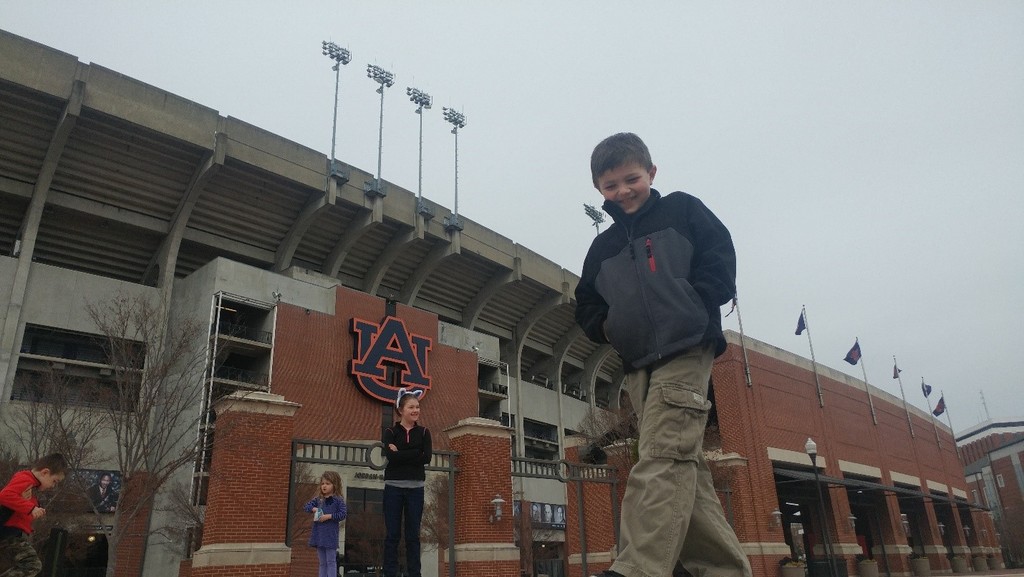
Monday Morning Medicaid Must Reads: May 27, 2019







The Menges Group puts out these great analyses and insights each month. And is kind enough to let us repost them for the MM audience. Check out themengesgroup.com to learn more about the work they do.
Attached are the December 2018 and January 2019 editions of our 5 Slide Series. The December edition presents our tabulations on an “average family’s” federal, state and local taxes for CY2018 and how their tax contributions are spent. The January edition tracks the national Medicaid enrollment projection from January 2014 through September 2017, showing enrollment growth dynamics between the expansion and non-expansion population, and across states that adopted Medicaid expansion versus those electing not to do so.
Taxes for an Average Family — December 2018 Medicaid Enrollment Progression 2014-2017 — January 2019

Clay’s summary: This is only the 8th one approved. Must be a fluke.
Key Excerpts from the Article:
Arizona has permission from the federal government to begin imposing work requirements next year on certain Medicaid beneficiaries in the state, but most Native Americans will be exempt, the Centers for Medicare & Medicaid Services announced Friday. Arizona’s waiver is the eighth of its kind, signaling that the Trump administration intends to continue pushing forward with Medicaid work requirements despite pending legal challenges in other states. This is the first waiver to exempt members of federally recognized tribes, resolving a major sticking point with Arizona’s application. State officials had asked CMS to exempt all Native Americans from the new requirement, but Trump administration lawyers said doing so would constitute illegal preferential treatment on the basis of race. The tribes contended, however, that the administration’s position contradicted longstanding legal principles and Supreme Court precedent, as Politico reported.
“There were a lot of complex legal issues here,” CMS Administrator Seema Verma told Politico’s Rachana Pradhan. “I think that we were able to find a middle ground.”…
Read full article in packet or at links provided
Clay’s summary: We will sell Medicaid on the exchange, and offer subsidized premiums (so nobody really pays for it, except taxpayers). And oh yeah – we’ll pay providers at Medicare rates. What could possibly go wrong?
Full study
Key Excerpts from the Article:
In Colorado, where average Affordable Care Act (ACA) benchmark premiums have increased 71% since 2014, advocates and stakeholders initiated an analysis to evaluate the feasibility and potential impact of a Medicaid buy-in offered outside the individual ACA market, with access to Advanced Premium Tax Credit funding under an ACA Section 1332 State Innovation Waiver. The product would be offered statewide, leverage the current Medicaid infrastructure, provide the same benefits and range of cost sharing as coverage on the state Marketplace (Connect for Health Colorado), and reimburse providers at Medicare rates. The analysis evaluates expected premiums for the buy-in product, the impact of its introduction on existing individual market premiums and the potential for state savings under this program design. The effort was led by a coalition of Colorado health policy advocates, represented by the Colorado Center on Law and Policy, the Colorado Consumer Health Initiative, and the Bell Policy Center. Manatt Health provided the policy and technical support, and Wakely Consulting Group, LLC, conducted the analytical modeling of the proposed program design and scenario alternatives….
Read full article in packet or at links provided
Clay’s summary: I’ve seen this movie before.
Key Excerpts from the Article:
Tener said her problems began in July, when the Ohio Department of Medicaid, which had been reimbursing providers for mental-health services provided to Medicaid clients, transferred that responsibility to managed-care insurance plans. Tener said she’s owed $40,000 from the plans, which have been criticized for failing to pay claims in a timely manner or rejecting them for unclear reasons..The Ohio Department of Medicaid has been reviewing the plans continuously and the providers since July 1, said Thomas Betti, the department’s press secretary.
“We understand the significant learning curve with the new system; however, data suggests that month over month, significant improvement is being made in the area of claims payment,” Betti said. “Issues have been minimal and quickly resolved.”Betti said the state sought to assist providers through the transition by disbursing about $146 million, via the managed-care plans, in advance payments from July through October. Those payments are similar to loans; providers are required to repay the money, and the state has instructed managed-care plans to delay repayment schedules, which had been set to begin in November….
Read full article in packet or at links provided



And now its that time of year we do the annual Mostly Medicaid (really Clay’s) Year in Review. For past reviews, visit here and here. If this is your first Year in Review with us, fair warning: it’s the one time I get all sappy. Provides a nice contrast to the cynicism and sarcasm you probably read the RoundUp for.[1]
You will need tissues.
![]()
A certain type of thinking, really. Reflection, introspection. All the eckshuns.
Spring is for hope and eagerness. Summer is for playing (and if you are a teenager in love it is a time of rhapsody and skirting curfews). Fall is for slowing down a bit, and breathing in the fresher, cooler air. Watching the oranges and reds and yellows on the trees.
But winter is a time for thinking.
And so I think, sitting in front of my fireplace. Warming my toes, my thoughts and- I hope – my heart. For just as winter brings cold outside, it also brings cold to many hearts.
Hot soup can help. Or a game of cards with an old friend.
***
Sometimes we do things not knowing exactly why, but trusting they are important and will be valuable at some point in the future.
About 20 years ago, I started saving every single card people gave me and put them in a box. After a year or so, I outgrew that box. And now I am about to outgrow a large plastic tub.
Being a strict minimalist, cards are the one thing I let myself pack-rat.
I can remember the exact conversation that started this habit. A friend of mine and I both loved the same band (the Weakerthans). In their song Left and Leaving[2], are the lyrics:
Duct-tape and soldered wires
New words for old desires
And every birthday card I threw away
I wait in 4/4 time
Count yellow highway lines
That you’re relying on to lead you home
When discussing this song, my friend was struck by this particular line about throwing away birthday cards. They said something to this effect: “You know, every time someone sends you a card, they were thinking of you. Thinking of you enough to spend $2.99[3], write something about you specifically from their heart, and place it in the mail or hand it to you. We really shouldn’t throw those cards away.”
And from that moment on I didn’t.
I get rid of most things. I hate clutter. I don’t hold onto anything else for sentimental reasons. But – I have a box of birthday cards, get well cards, letters, graduation notes, thank you notes,[4] and myriad other similar items that has grown over the past 2 decades.
My thought is that one day when I am 80, I will sit and read these cards and be reminded of a time that I was loved and surrounded by those that I loved. That memories will flood in and drown out the sadness I see so often in the nursing homes I visit. That the effort to read someone’s poor handwriting inside a Snoopy-themed missive will pay off in smiles and remembered inside jokes.
Hold that thought. This will be the bow we put on the boxes that are sometimes painful to open.
Its been a wild, wild Medicaid ride hasn’t it dear reader? I looked back at the topics in our Monthly Medicaid News Roundtables, and made a short list of major happenings in our world this year:
Work requirements; Good vs Evil; Darth Vader; Orange Man Bad
It’s all a bit overblown, don’t you think? Reasonable people can disagree without casting each other as Nazi’s. At least they used to be able to. I yearn for a return of reasonable people discussing Medicaid. Hint – it does need fixing. Start there.
Another hint- a rebalancing of the state/federal “partnership” is long overdue.
Expansion on the ballot
This one took me by surprise. I wasn’t surprised that in state after state people voted for it (put any entitlement on the ballot and of course people will vote for it). I was surprised that it can even work this way. And I’m still not sure it can because it all has to go through the budget process. Stay tuned…
Social determinants
All 3 of these things are true:
Managed care in the Tarheel State
North Carolina was added to the “managed care” column this year. Seems like 85% of the 2018 Medicaid conversations I had were around this. Now if we can get through the protests (I know we don’t have them yet, but I will bet you anything we will).
Yes, it gets cold even in Birmingham, Alabama. Not as cold as some of the places you lunatic Yankees live (I’m looking at you my good friends in Michigan, Ohio, Maine- I mean, why not just live at the North Pole? That’s the one with penguins, right? Or is it the south pole? Or both?).
And I love fire.
I was the kid who other kids could not play with because I taught them how to play with fire. My first “date” was when I was seven and I went to see E.T. in theatres with a little girl my age. When her parents dropped her off, the first thing I did (to try and impress her?) was walk over to the nearest tree and show her how to strike a match and throw it at the tree.
I like fire. And fireplaces.
Many of you who have spoken to me the past few years know I have been slowly remodeling a 1974 elevated ranch. Well, I finally got around to fixing the fireplace. Which really was a chimney repair/ash dump investigation/damper replacement/flue cleaning/new cap install project. Just a small project. Only took me 2 months.
But now its done. And we sit by the fire whenever we can (I have come to think that first-thing-in-the-morning fires are the best. How nice it is to start your day with a fire and its heat and its light and the smoke wisping up into the flue as you drink a cup of coffee. Or see you children stumble out into the living room in their pajamas).
And these are the things I think about when I sit next to my newly working fireplace and stare into the flames.
I do not think about Medicaid.
I think about people.
As many of you know, Daddy died a year ago today (12/28/2018). My grieving has been different than most of my family members. For whatever reason, I did not really cry a lot when it happened. Or at the funeral. Or pretty much the entire year of 2018. I did cry here and there, but only a little.
I wasn’t holding it back (at least I don’t think I was). But it was noticeable to others, including my daughter who asked me – “Are you not sad? Now that Papa is gone?” I didn’t have a good answer. And I still don’t.
I am sad. But also not. Daddy left me with a clear view of death.
And its not that I don’t think about. I think about him most days. But in a good way. Memories of his little strange habits, or of conversations we had. Or ones I wish we would have had.
I try to spend my rememberings on things from when he was most alive. I do try to block out the gruesome final months of his life as he succumbed to brain cancer.
That was hard.
So hard that all I could do was work. Sitting in the room next to his, working away. Furiously trying to deny that he was 10 feet from me, his body and mind mangled more each day by this evil opponent.
I have many, many, many regrets in my life. But the one that has stuck with me most this past year is that instead of spending most of my time next to his bedside holding his hand in those last few weeks, I instead spent most of my time typing and analyzing and staring at a computer just a room away.
I’m sorry about that, Daddy.
![]()
I have learned in recent years, sometimes all our urges to find a silver lining, to make a happy ending, to put a bow on it (just look at all the idioms we have for this)- sometimes we can’t overcome the brutality of certain events. Sure, we can say “they’ll always live in our hearts” (never has made sense to me), or “make the most of life since its so short, and it will be ok as long as you live a full life” (always seemed like it missed the main point).
Sometimes we have to face the reality of loss. We have to accept for what it is. We can’t deny it. We can’t escape forever into our hobbies or pursuits or careers. Loss (primarily death) refuses to actually be transformed into something less than an awful, horrible, total thing.
We can’t put a bow on it.
I can still remember calling a friend and colleague who shares this Medicaid world of ours last February. I was at the Medicaid Innovations conference in Florida, and had stepped out to make a call to Dr. G.
The purpose of my call was to ask his opinion on a partner I was considering bringing on. Dr. G is someone whose opinion I trust (and his judgment even more). He started out as a client years and years ago.
And he is the reason I have a beard.
Dr. G was a key client stakeholder for a giant technology implementation contract my company at the time had (if I remember correctly, about $80M over a few years). In my first meeting with Dr. G, at the end of the meeting he had a new agenda item. It went something like this:
“You seem like a very impressive young man. And it seems like you have everything in order for the preparation for this project.”
He paused.
“But you look so young. I for one would appreciate a little more gray hair on a project of this size and complexity.”
I have always had a baby face.
I thought for a moment.
“Give me a month, Dr. G.”
I spent the next month growing a beard to try and look older (it used to work for my friends in high school when they tried to buy cigarettes, so why not for this?)
At our next meeting, I pointed to the beard.
“Do you feel better now, Dr. G?” I asked.
“Yes.”
It was the start of a wonderful working relationship, and I have gotten to know one of the most committed, honorable men in this space. All because I threw away my razor.
![]()
Back to the call from sunny Florida this past February.
After giving me his insights into the question that occasioned the call, he also asked how I was doing.
And I told him it was hard to have not cried about Daddy yet now (at that time) that it had been more than a month.
And he told me of the story about how it took him a long time to cry about the loss of his parents. He shared a sacred part of his life with me that day.
And he let me know it was ok to not cry yet. But that it would come.
And to hope that God would bless me for it to come in a private moment. For when it comes, there will be no holding back the tears. It will overwhelm you and consume you and take control of not just tear ducts, but also breathing and your muscles and all your emotions and your mind. It will be an experience of recognizing the totality of the loss.
And then it will somehow be better.
![]()
My mom has been cleaning out things since Daddy died. I think people do this for various reasons. Some people do it to get rid of clutter. Some people do it to busy themselves and avoid thinking about the one who has died.
Some people do it as a way to remember the people who have died.
I think that’s what Momma has been doing with all her cleaning.
And in cleaning out things, she found a stack of letters and cards of mine. She brought them over one day in early November and left them on my kitchen counter.
At first all I noticed was the letter from my elementary school congratulating me on coming in 2nd place in the city-wide spelling bee. And I remembered how much I did not like the experience of 2nd place. And I remember vividly the face of the little girl who beat me (I do not remember the word I lost on).
And I told my children the story of this. And they laughed. And that was that.[5]
The next day, I saw the stack of cards on the counter again. If your house is like mine, there is a constant battle between you and one spot on your counter to keep it free from mail or books or keys or change or Home Depot receipts. The stack of cards was in that spot, staring back at me.
That’s when I noticed the other things under the spelling bee letter.
I opened the first one and began to sob. It was a highschool graduation card to me from Daddy’s very best friend. Emmet Ladner. Emmet and Daddy became fast friends on the Mississippi Gulf Coast due to their shared love of fishing. Emmet had died 10 years or more ago and I watched Daddy miss him.
And then I opened more cards. Many of them from Daddy. Or from aunts long dead. Or friends forgotten.
And I simply could not stop crying. But it was of joy. I was remembering the good things, all the many people God had placed in our lives and the times they thought enough of me to spend a few bucks and write down a few thoughts about me that they felt in their hearts.
It was not – as Dr. G had wished for me – a private moment.
My wife was there to hug me. My kids were there to see my cry. And I’m glad they did.
I think this year I realized recently that there are mostly 3 kinds of people:
There are many reasons that created situation #2- the people you want to be around but cannot.
And that leaves us with the 3rd kind:
I now think about the people in #2 a lot. And you should, too. You shouldn’t avoid it (if you do).
Its good to think about the people in #2. It is important to miss them. Important to grieve. To mourn. To ache. To cry.
But I need to start paying more attention to the people in group #3. (And so do you).
And this is where we put the bow on all this.
I’m still saving this big ole’ box for when I am old and gray. I’m working on the old part. And the gray pokes through. But hopefully I still have decades longer to fill this box up and look at it when I am old.
But – I did sneak a peak at a few of them when Momma brought them over. A little stack. A small bundle of memories that jarred in me tears of joy.
And I would like to share just a few of those cards – or rather share a bit about who sent them- with you before we land this plane.
And so many more even just in this little stack. From my siblings, from Momma and Daddy. Somewhere in the big box is a letter from my friend Cecille who died (along with her little brother) when she was hit by a train in her late teens. Way too many to write about.
What do I take away from all these cards? People come and go and everyone dies. But in the in-between parts, the times you spend with them, the times they still send you cards (and even after that when you read the cards years later)- something amazing happens. Somehow, despite all the insurmountable despair of loss we all must face, somehow we have the capacity to love one another.
Let’s do more of that in 2019.
I almost didn’t write this part up. This thing has gotten way, way longer than I intended. And I hope for the 2019 Year in Review I can find a topic besides death and loss. 3 years in a row is surely enough.
But this part is fun.
When I was kid, we went to every Auburn game. Home and away.
This was before that jackass Alabama fan poisoned the big oaks on Toomer’s corner.
Back when you could still park all over campus on gameday, in crazy places. And camp out for 3 days before the game with 100,000 of your closest friends.
Like an idiot, I hated much of those times as a kid. Or at least I thought I did.
Now, I do things like return to Auburn and walk around with my kids. Just like Daddy did with me.
Not knowing why, we often return to the places our fathers took us.

What was really crazy, was that Daddy would just walk on the field after a game and walk into the locker rooms just to talk with players. And after that we would walk over to the players dorms and hang out with them. So as a 12 year old I’m chilling with the dude that just kicked the winning goal against LSU. Or the guy that missed the pass that could have beat Arkansas in the last 3 seconds. Those 2 guys have very different moods, by the way.
But the point is that Daddy had a way of getting into places (and people’s hearts) simply by acting like he was supposed to be there. Let them tell you no if they feel they must. But until then, sneak into the stadium.
And that’s what we did a few weeks ago. Passing through Auburn on our way back home from a trip with the kiddos.
There was one gate open at Jordan-Hare stadium that day (pronounced Jur-dan for those of you who don’t know). I snuck in first and waved to the kids to follow.
There was a worker there. He looked at me.
I froze.
“I gotta lock the gate, so please make it quick.”
I had the feeling he sees this a lot. And he was so kind and probably is to every Auburn fool wandering back in. Whoever he is, he was my hero that day. And I hope I get chances to be so kind to others in need of sneaking into stadiums, too.
We go back to the places our fathers took us.
 So I know what I need to do now. How 2019 needs to go.
So I know what I need to do now. How 2019 needs to go.
My box is overflowing.
I need to send more birthday cards so others can put them in a big box and pull them out one day and go through each one and defiantly shake their fist in the face of death and loss and separation and tell the Evil One he has not won because there was joy. There was love. There still is. But – most importantly- there still will be.
And it can be forever for those of us who choose it. Beyond time, forever joy. With our loved ones and with Christ. For all of you readers who are non-believers (so many of you are, and I hope you know by now I love you regardless of any differences of opinions or beliefs), suffer me one more time in 2018 to share the simple gospel:
You (and me and everyone ever born) are a sinner. You need a savior. His name is Jesus.
Merry Christmas and Happy New Year my dear readers! You are loved by me, each and every one of you. If you like you can print this out and put it in your box and count it as a card from me to you. Me thinking about you and writing it down.
Please don’t stop writing in (clay@mostlymedicaid.com) and calling (919-727-9231). You have no idea how much it means to me when you write in and tell me your thoughts about what I write.
War Eagle!
Onward and Upward!
Trystero: The Father Sent the Son to Save the World (English)
[1] I have found my old love of footnotes again. It’s like a little side conversation beyond me and you. Titles that were also considered:
A Box of Letters
Looking At Life With Clear Eyes and A Full Heart
Memories as a Gift to Get Us Through Our Journey
Returning to the Places Our Fathers Took Us
[2] For those of you who have enjoyed my musical recommendations in the Roundup over the years, this song, album and band are in my opinion one of the most important things to happen to music in my lifetime. For people who have never heard The Weakerthans, I tell them their art is the closest thing to perfection in the combined genres of music and poetry that I have ever encountered. It may not be your style – but I drove from Baltimore to Toronto once just to see them play and its still one of the best life decisions I have made.
[3] For a fun look at the greeting card industry (including average prices, which have gone way up since the mid-1990s), see https://www.thesprucecrafts.com/greeting-card-industry-facts-and-figures-2905385
[4] Oxford forever! Grammarians, unite and #Resist! https://en.oxforddictionaries.com/explore/what-is-the-oxford-comma/
[5] 6 sentences in that segment started with “and.”